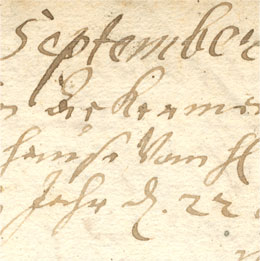In what sense is the Martna church retable extraordinary?
Unlike all the other retables connected to Ackermann, the one in the Martna church, completed in 1700, has been preserved in almost its original form. In the 19th century, a new painting was installed on the retable’s main level and the panel bearing text in German was replaced with one bearing text in Estonian, but these have now been removed. The powerful, yet at the same time pure form of northern baroque art, the pursuit of spatiality, and the importance in baroque art of the message conveyed by painted and carved figures can be seen.
What is the retable’s message?
Above the picture depicting the Last Supper and Christ’s death on the cross painted by an unknown artist stands Christ the Invincible between two angels marking the divine sphere. The point of the composition is to declare that God has sent his only begotten son into the world to redeem mankind and to give Christians the gift of eternal life.
Moses and John the Baptist stand on opposite sides of the paintings, symbolising the union of the Old and New Testaments, and the importance of the Ten Commandments and the sacrament of baptism. Alongside them stand Faith, with a cross, and Hope, with an anchor.
What was the retable’s original brilliance of colour, gold and silver like?
In addition to colourful baroque paintings in wide, gilded frames, columns with red marbling, gilded bases and capitals, and column supports with grey marbling, Ackermann’s carved statues on the retable were also very colourful. Ackermann’s figures had flesh-toned faces, hands and feet, dark hair, beards and eyes, red lips, garments embellished with red, blue and green, and colourful attributes. Gold, silver and lustre were used abundantly, for instance on the dresses of the Virtues and the wings of angels. Even a stigmata was painted on Christ’s pink body. His loincloth evidently was originally silver. The retable’s ornamentation was similarly also covered with colour, gold and silver.
What can Ackermann’s Martna figures be compared with?
The figures of the Martna retable can be compared to the master’s earlier figures on the retables in Tallinn’s cathedral and the Türi church (1694–1696 and 1693, respectively), as well as with his later figures on the pulpit in Tallinn’s Swedish St. Michael’s Church (1707). A clear, sharp cutting line that takes into account the interplay between light and shadow is characteristic of the master’s last ten years of activity.
